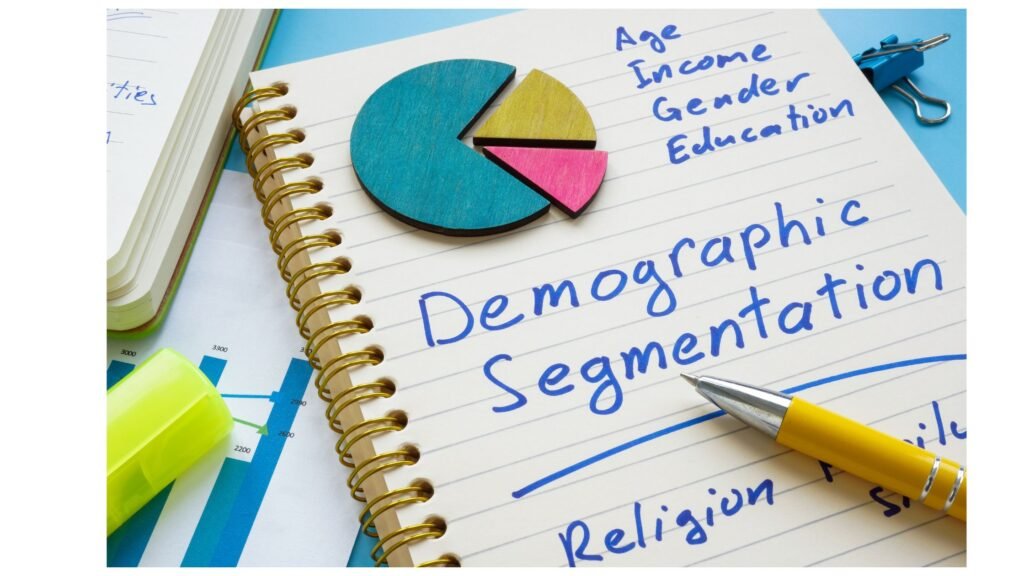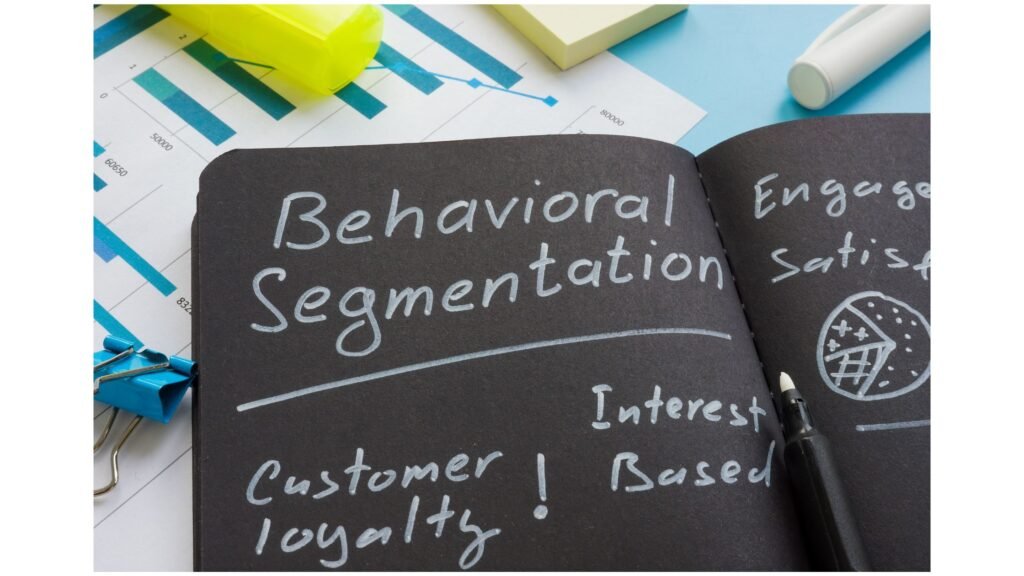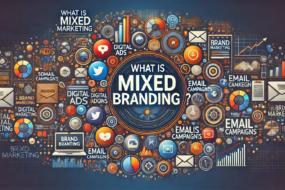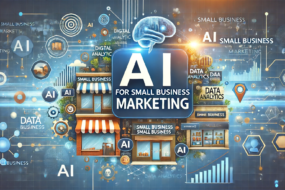
Marketing segmentation is a fundamental strategy businesses use to tailor their marketing initiatives for particular consumer segments. For B2C (business-to-consumer) companies, understanding the various segmentation approaches is crucial for reaching their target audience effectively. This comprehensive guide will explore which of the following are B2C marketing segmentations businesses can leverage to create successful marketing campaigns.
From demographic to psychographic, geographic to technographic, we’ll delve into each segmentation type and provide real-world examples of how companies apply them.
What Is Market Segmentation?
Market segmentation is a fundamental marketing strategy and process that involves dividing a more extensive and diverse market into smaller, more manageable segments or groups based on specific criteria or characteristics.
Market segmentation aims to identify and understand distinct subsets of a market, each with unique needs, preferences, and behaviors. By doing so, businesses can customize their marketing initiatives and product offerings to better meet the distinct demands of these segments, resulting in more effective and targeted marketing campaigns.
So, the question is,
Which Of The Following Are B2C Marketing Segmentations?
B2C (business-to-consumer) marketing segmentations are strategies businesses use to divide their consumer market into distinct groups with shared characteristics or needs. These segments enable companies to create targeted marketing campaigns, personalize messages, and better meet the specific demands of different customer groups.
Here are some common types of B2C marketing segments:
Demographic Segmentation

Demographic segmentation divides consumers based on easily measurable attributes like age, gender, income, education, marital status, and occupation.
Demographic segmentation is a marketing strategy that categorizes a market or target audience into segments based on various demographic factors or characteristics. Demographic segmentation aims to understand and target specific consumer groups with tailored marketing messages and products or services that are likely to connect more effectively with their unique characteristics and needs. This approach enables businesses to allocate resources effectively and create more relevant marketing campaigns.
Example: A cosmetics company might create marketing campaigns for young adults, middle-aged individuals, and seniors, tailoring products and messaging to each age group’s needs and preferences.
Geographic Segmentation

Geographic segmentation is a marketing strategy that categorizes a market or target audience into distinct segments based on geographic location or physical geography. In other words, it categorizes consumers or businesses based on their location, country, region, city, neighborhood, or even specific locations like shopping malls or airports.
Geographic segmentation recognizes that consumers in different geographic areas may have varying needs, preferences, behaviors, and buying patterns due to climate, culture, language, and local economic conditions.
Example: A beverage company might promote warm-weather drinks in regions with hot climates while focusing on warm beverages in colder areas.
Psychographic Segmentation

Psychographic segmentation is a marketing strategy that classifies a market or target audience into segments based on psychological and behavioral characteristics. Unlike demographic segmentation, which focuses on observable and quantifiable traits like age, gender, or income, psychographic segmentation delves into the inner workings of consumers’ minds to understand their attitudes, interests, lifestyles, values, personalities, and motivations.
Businesses can customize their marketing strategies by categorizing consumers based on these psychological factors to resonate more effectively with specific consumer groups.
Example: An outdoor gear company may target adventure enthusiasts who value exploration and outdoor experiences with products and messaging that resonate with their adventurous lifestyle.
Behavioral Segmentation

Behavioral segmentation is a marketing strategy that classifies a market or target audience into distinct segments based on their behaviors, actions, and interactions with products, services, and brands. This approach seeks to understand and group consumers based on how they behave about the products or services they purchase, their usage patterns, brand loyalty, and other behaviors relevant to the marketer’s goals.
Behavioral segmentation is a potent tool that enables businesses to tailor their marketing efforts to consumers with similar behavioral characteristics and needs.
Example: An online bookstore might send personalized book recommendations based on a customer’s past purchases and reading habits.
Technographic Segmentation
Technographic segmentation is a marketing strategy that categorizes a market or target audience into segments based on technology-related behaviors, preferences, and characteristics. It focuses on understanding how individuals or businesses use technology, their level of technology adoption, online behavior, and the devices they use.
Technographic segmentation is particularly relevant in B2C (business-to-consumer) marketing as it helps companies tailor their marketing efforts to consumers’ digital preferences and behaviors.
Example: An e-commerce platform might optimize its website and app for mobile users and send mobile-specific promotions to those who frequently shop using smartphones.
Lifestyle Segmentation
Lifestyle segmentation is a marketing strategy that categorizes a market or target audience into distinct segments based on their shared lifestyles, interests, values, and behaviors. This approach recognizes that consumers often make purchasing decisions influenced by their broader lifestyle choices. They are particularly relevant in B2C (business-to-consumer) marketing because they allow companies to develop more personalized and compelling marketing strategies that resonate with particular consumer groups.
Example: A company selling eco-friendly products might target environmentally conscious consumers who prioritize sustainability in their lifestyle choices.
Generational Segmentation
Generational segmentation categorizes consumers based on their birth generation, encompassing Baby Boomers, Generation X, Millennials, and Generation Z, each with distinct preferences and behaviors.
Generational segmentation is a marketing strategy that categorizes a market or target audience into distinct segments based on generational cohorts. It involves grouping individuals born during the same period and sharing life experiences, values, attitudes, and behaviors. Generational segmentation is particularly relevant in B2C (business-to-consumer) marketing because it recognizes that different generations may have unique preferences and needs that influence their buying behaviors.
Example: A fashion brand might design clothing lines catering to the unique fashion tastes of Millennials, considering their affinity for trends and sustainability.
So, the correct answer to the question “Which of the following are B2C marketing segmentations?” is that all of these are B2C segmentations.
The choice of segmentation criteria depends on the specific goals, product or service, and target audience of a business. Effective segmentation helps companies better understand their customers and customize their marketing initiatives for optimal effectiveness.
Strategy Of B2C Market Segmentation How To Start It?
Developing a B2C (business-to-consumer) market segmentation strategy is crucial for businesses looking to understand their diverse customer base and tailor their marketing efforts effectively. Here’s a step-by-step guide to creating a B2C market segmentation strategy:
Step 1. Market Research and Data Collection
- Start by collecting comprehensive data about your target market. That can include demographics (age, gender, income, education), psychographics (lifestyles, values, interests), geographic location, and behavioral data (purchase history, online behavior).
- Use surveys, interviews, focus groups, online analytics, and other research methods to gather relevant data. You can also leverage customer relationship management (CRM) systems and segmentation tools to gain insights into customer behavior.
Step 2. Identify Segmentation Variables
- Decide on the criteria or variables you will use to segment your market. Consider which factors are most relevant to your business and industry. Standard variables include age, gender, income, education, family status, lifestyle, attitudes, and buying behavior.
- In B2C marketing, combining these variables to create a more detailed comprehension of your customer segments is often valuable.
Step 3. Segmentation Process
- Once you’ve collected data and identified segmentation variables, use statistical analysis or segmentation software to group customers into segments. You can use clustering algorithms or segmentation models to automate this process.
- Aim to create segments that are distinct, measurable, accessible, and actionable. Each segment should represent a group of consumers with similar characteristics and needs.
Step 4. Profile Each Segment
- Develop detailed customer profiles or personas for each segment. That involves creating a narrative that describes the typical customer within the segment. Include these profiles’ demographics, psychographics, behaviors, motivations, and pain points.
- Persona development humanizes your target audience, making it easier to create personalized marketing strategies.
Step 5. Evaluate Segment Viability
- Assess each segment’s attractiveness in size, profitability, growth potential, and alignment with your business goals.
- Prioritize segments that offer the most significant opportunities for your business.
Step 6. Tailor Marketing Strategies
- Customize your marketing efforts for each segment. This includes crafting messages, offers, and promotions that resonate with each group’s needs and preferences.
- Choose the most suitable marketing channels to connect with each segment effectively. For instance, younger consumers may be more reachable through social media, while older demographics may respond better to email marketing or traditional advertising.
Step 7. Implement and Test
- Roll out your segmented marketing campaigns and strategies. Monitor and assess the outcomes of each campaign to assess its effectiveness.
- Consistently examine data and customer feedback to enhance your segmentation strategy and marketing approaches over time.
Step 8. Customer Relationship Management (CRM)
- Implement a robust CRM system to track and manage customer interactions, purchase history, and preferences. CRM software can help you deliver personalized experiences and target customers with relevant offers.
B2B Marketing vs. B2C Marketing Segmentation: What’s The Difference?
B2B (business-to-business) marketing and B2C (business-to-consumer) marketing are unique approaches that cater to diverse target audiences and have unique segmentation strategies. Here’s a comparison of B2B and B2C marketing segmentation:
1. Target Audience
- B2B Marketing: B2B marketing targets other businesses as customers. The emphasis is on marketing and selling products or services to companies or professionals who make purchasing decisions for their organizations.
- B2C Marketing: B2C marketing targets individual consumers. It aims to influence the purchasing decisions of individual customers for personal use.
2. Complexity of Sales
- B2B Marketing: B2B sales are typically more complex and involve longer sales cycles. Decision-making in B2B transactions often requires consensus among multiple stakeholders within the buying organization.
- B2C Marketing: B2C sales are generally more straightforward and often involve shorter sales cycles. The decision-maker is usually the end consumer, and the purchase decision is made for personal reasons.
3. Relationship Focus
- B2B Marketing: B2B marketing emphasizes building solid and long-term relationships with business clients. Trust, credibility, and the ability to meet specific business needs are critical in B2B relationships.
- B2C Marketing: While building customer loyalty is essential in B2C marketing, the relationships tend to be more transactional and less complex than B2B. Customers often have a broader range of choices and may not have as deep a connection with a single brand.
4. Segmentation Factors
- B2B Marketing: B2B segmentation often considers the industry, company size, location, purchasing authority, and specific business needs. Segmentation may also focus on the company’s lifecycle stage and technology preferences.
- B2C Marketing: B2C segmentation considers individual characteristics like demographics (age, gender, income), psychographics (lifestyles, values), geographic location, and behavioral data (buying habits, brand loyalty).
5. Marketing Channels
- B2B Marketing: B2B marketing often involves direct sales, relationship-based marketing, trade shows, industry publications, content marketing, and email marketing. Personalized, one-on-one interactions are shared.
- B2C Marketing: B2C marketing uses a broader range of channels, including mass advertising, social media, e-commerce platforms, retail locations, and influencer marketing. It often focuses on reaching a larger, more diverse audience.
What Are The Benefits Of Marketing Segmentation
The benefits of marketing segmentation are numerous and play a pivotal role in the success of marketing efforts. Here are the key points regarding the benefits of marketing segmentation:
- Targeted marketing
- Higher conversion rates
- Enhanced customer satisfaction
- Optimized resource allocation
- Improved product development
- Reduced marketing costs
- Competitive advantage
- Better marketing ROI
FAQs
Q1. Can I Use Multiple Segmentation Criteria Simultaneously?
Yes, many businesses use a combination of segmentation criteria to create more nuanced segments. For example, you can precisely combine demographic and behavioral factors to target specific groups.
Q2. What Are The Benefits Of Using Segmentation In Email Marketing?
Email marketing segmentation enables you to dispatch more relevant and personalized email campaigns. This can increase open, click-through, and conversion rates and reduce unsubscribe rates.
Q3. How Can I Collect Data For Segmentation Purposes?
Data for segmentation can be collected through surveys, interviews, online analytics, social media monitoring, customer feedback, and data mining. Utilizing customer relationship management (CRM) systems and third-party data sources can also be valuable.
Conclusion
In the dynamic landscape of B2C marketing, understanding the various segmentation strategies is essential. “Which of the following are B2C marketing segmentations?” is a question that prompts us to explore the diverse ways to connect with our audience effectively. From demographics and psychographics to behavior and geography, these segmentation methods offer potent insights into consumer preferences.
Now, it’s your turn to share your thoughts! Which B2C marketing segmentation strategy resonates with your experiences? We invite you to join the conversation and leave your valuable comments below. Your insights can help others navigate the ever-evolving world of B2C marketing segmentations.








No Comments